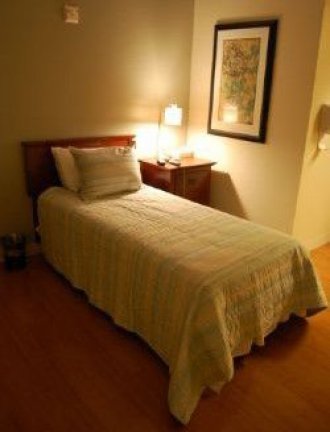
Pediatric Sleep Disorders
Obstructive Sleep
More than 18 million Americans suffer from sleep apnea. It can affect anyone at any age, including children. Obstructive Sleep Apnea (OSA) is marked by obstruction of the upper airway during sleep. This causes pauses or breaks in a person's breathing, preventing air from entering the lungs and forcing the person to wake briefly to start breathing again before falling back to sleep. The person with OSA is usually unaware of this. The interruption to breathing can happen hundreds of times a night, resulting in markedly fragmented sleep. As a result, adults with OSA often feel excessively sleepy during the day. However, children have symptoms similar to children with ADHD such as hyperactivity and unable to concentrate.
Other signs are: sleeping in an abnormal position such as with head propped up, snore
loudly and often, gasping or choking sounds, sweat heavily during sleep,
behavioral problems, learning problems, restless sleep, difficult to awaken,
headaches, irritable or aggressive, fall asleep in school, diagnosed with
ADHD or bedwetting at an untypical age.*
*American Academy of Sleep Medicine, (n.d.), My Child Snores, Westchester, IL.
Treatment: Removing the tonsils and adenoids can treat 75-100% of OSA in children. If obesity is an issue, weight loss is of extreme importance to aid in the treatment of the sleep apnea. If surgery is not an option, for whatever reason, or if surgery does not resolve the OSA, then the child may wear PAP therapy. The child sleeps with a small, lightweight mask (various options exist) over the nose that is attached to a quiet air machine. This machine delivers the prescribed pressure that "splints" the airway open.
Periodic Limb Movement Disorder (PLMD)
A child can have rhythmic limb movements throughout the night during sleep that may disrupt the quality of the child's sleep. This may result in daytime sleepiness and/or hyperactivity with the child. They may also complain of limb pain. This may or may not be treated with prescribed medications. Please consult your sleep specialist.Restless Legs Syndrome
The child describes creepy, crawly sensations in their legs and can't keep their legs still while awake. This can make it difficult for a child to fall asleep at night. Sometimes this can be confused with growing pains. This may or may not be treated with prescribed medications. Please consult your sleep specialist.
Bruxism
Teeth grinding at night, (which is often caused by stress) could possibly disrupt sleep. In severe cases the child's parents may need to consult a dentist and/or family doctor for a special mouth guard to prevent dental injury. The best treatment is to lessen stress.*
*American Academy of Sleep Medicine, (n.d.), Sleepwalking and Other Childhood Parainsomnias, Westchester, IL.
Sleep Terrors
Usually occur in childhood, when a child suddenly has a blood-curdling scream out of non-REM sleep. These events are not usually remembered by the child experiencing the event. Each event may last up to 5 minutes. Usually this is more upsetting for the parent watching the event. These usually occur in the early half of the night. These are usually harmless to the child. The number events may increase with changes in the child's life or while under physical stress such as an illness.
Nightmares
Scary dreams that may awaken the child out of the dream state. Occur during the dream state of sleep (REM) and usually occur during the second half of the night. These can usually be remembered in extreme detail by the child.
Sleep Walking
The child may wonder around the house quietly without bumping into things. The child may speak. Injury is unusual while sleepwalking. An episode may last 5-15 minutes. Treatment is not usually necessary. Tips to protect the child are lock all exterior doors and windows at night, place a bell on the child's door to alert the parents that they are up, pad corners or areas that could harm the child.
